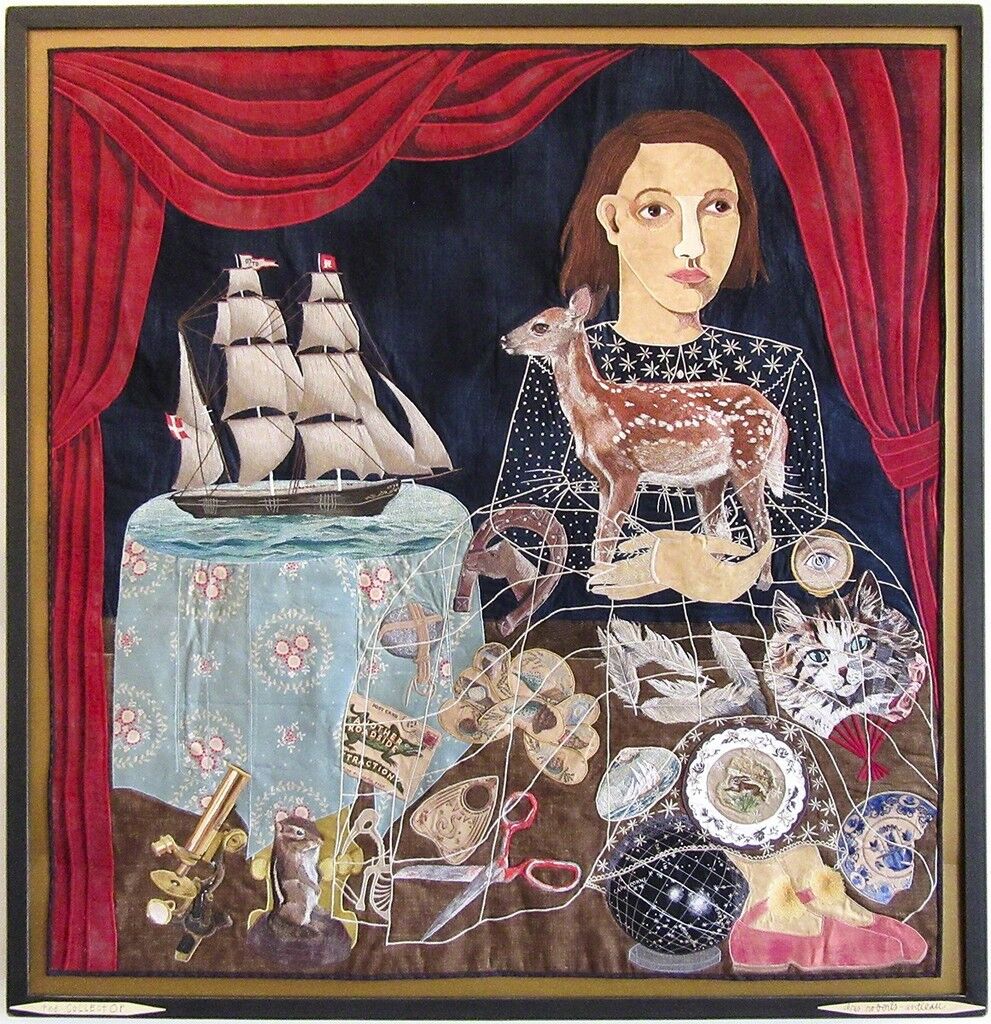Art Market
What to Do If You Inherit an Art Collection

Chris Roberts-Antieau
The Collector, 2017
Antieau Gallery
Inheriting art can be a very educational and meaningful experience, helping you to learn more about your family and about the art world. On the other hand, assessing which pieces you’d like to part with and knowing how to do so can create a world of stress. So whether you’ve inherited one artwork or hundreds, here are some tips for figuring out what to do with it all.
What first?
Before figuring out what you’re going to do, first assess what you have. Some art collectors have the foresight to get their collections appraised, and may even have an inventory with the locations of artworks around their house and photographs of each piece, according to Daile Kaplan, vice president of the auction house Swann Galleries.
But if you do inherit a thoroughly inventoried collection, don’t rely on those documents too much—appraisals need to be up to date for tax purposes, meaning a seasoned appraiser will come in handy. Amy Parenti, vice president of the auction house Freeman’s, recommends finding one affiliated with one of the three major professional organizations of appraisers: the American Society of Appraisers, the International Society of Appraisers, and the Appraisers Association of America. To best evaluate a piece, the appraiser should be well-versed in the specific type of artwork, or the technique or materials the artist used. An appraisal typically involves someone looking at each item in the collection, photographing it and assessing its condition, and doing research into comparable items that have recently sold in order to determine that work’s value.
“The services of a professional at some point will be important, if not necessary, in making a determination or assessment about current values,” Kaplan said.
And appraisals can be done for reasons unrelated to estate tax—Parenti recommended an equitable distribution appraisal if you’re splitting up the collection among several relatives.
To save or to sell?
Obvious reasons come to mind for deciding to keep or sell inherited artworks: You may want to continue to cherish your grandmother’s favorite painting that hung in her living room, or you may want to immediately get rid of a creepy clown photo that has haunted you since childhood. Other, more practical reasons relating to space and resources may also govern your decisions.
Keep in mind that not all art is created equal; even if a piece is attributed to a once-famous artist, the market for that artist may have completely dried up. In other cases, a museum retrospective or a recently issued catalogue may create an advantageous moment to sell. Misattribution can also be a problem—a treasured family heirloom may turn out to be a fake or a copy upon closer inspection. But don’t despair: You could also wind up in a position similar to the woman who found out a painting hanging in her kitchen was worth $6.6 million. Either way, an appraiser or an auction house specialist will be able to tell you what still has value, and you can make an informed decision from there.
As Kaplan noted, “If there are 100 artworks in a collection, the core value or primary interest may be in 30 or 40 of those artworks.”
I’m keeping this piece. What do I do now?
The next steps might entail looking into insuring the art and, if you don’t have space for it, putting it into a storage facility. Art should be stored in a temperature- and humidity-controlled environment, and there are plenty of storage facilities that specialize in storing fine art. If it’s staying in your home, be sure to think carefully about where you’re putting it: Displaying a painting or a photograph near a window or by a bright light source can damage it. Talking through how to frame and protect the piece with an experienced professional is the best move.
This one has to go. Can I sell it?
If you decide to sell a piece, an auction house can provide an estimate for how much the work might fetch at auction. The estimate may be based on a home visit by specialists, or may be done strictly based on images—many auction houses, including Swann, Freeman’s, Bonhams, Sotheby’s, Christie’s, and Phillips, have online forms and platforms for requesting estimates. After the seller agrees to the presale estimate and any other fees that might be incurred by the auction house, the piece is brought in, photographed, put into a catalogue, and offered at auction.
Parenti said she sees a fair amount of disappointment on the secondary market, since the vast majority of works depreciate in value. The presale estimates don’t only reflect what might be hot on the market; the condition of the piece, its provenance (the history of its ownership), and its rarity are also considered. And it’s impossible to tell which artists might be hot in the future, even for auction house specialists.
“When people are going down this path, they might be surprised,” Parenti said.
I don’t like this painting, and it has no market value. How can I get rid of it?
Not all art collections are full of gems, and at some point, you may need to part with some unprofitable pieces. But many greener methods exist than just trashing it. It may be possible to donate the art to a charity benefit, though certain procedures need to be followed to claim a tax deduction. Antique stores, local charity shops or galleries, and even eBay are all options. Parenti suggested a good old-fashioned garage sale as a last-ditch way to clear out unwanted items.
“It may not have a whole lot of value as a painting, but it’s just a great, beautiful object, and someone’s going to love it as an item of decoration,” Kaplan said.
Christy Kuesel is an Editorial Intern at Artsy.




No comments:
Post a Comment